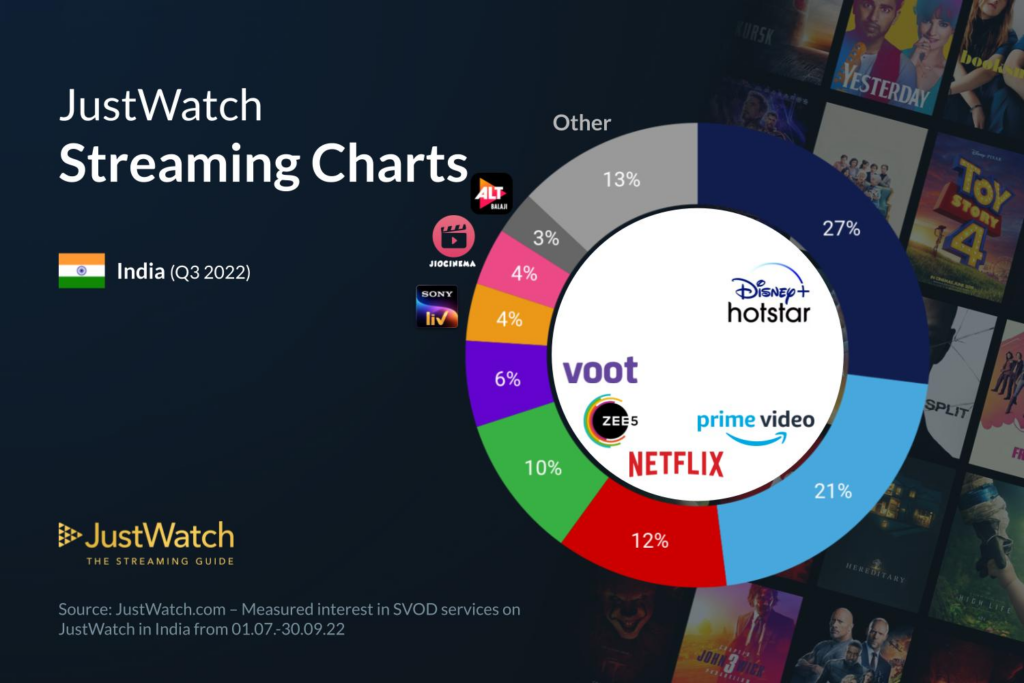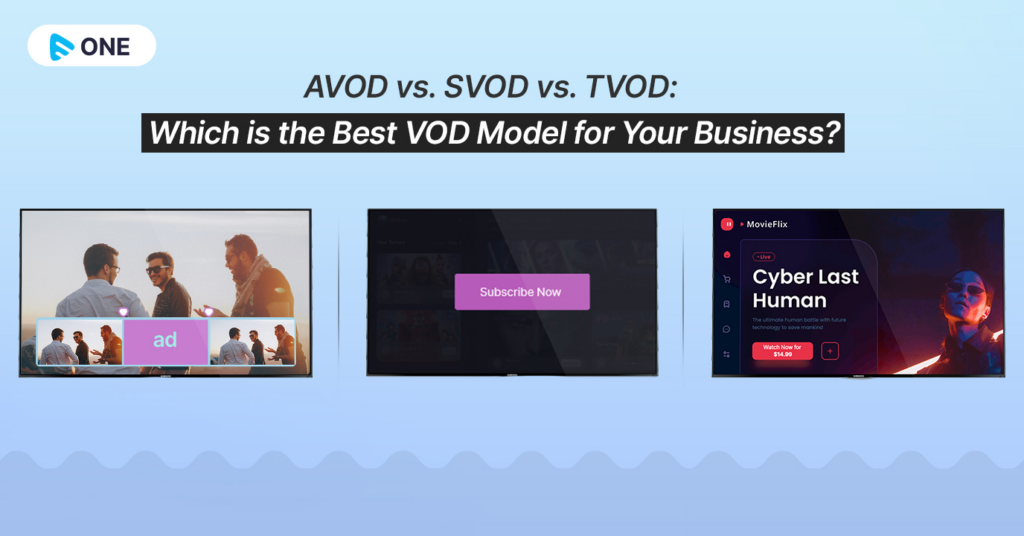Video streaming services, or subscription video-on-demand (SVOD) services, have exploded in popularity in recent years. SVOD services allow users to watch TV shows, movies, documentaries, and other video content online via the Internet.
Unlike traditional broadcast or cable TV, SVOD services give users the flexibility to watch content on-demand, without needing to adhere to specific broadcast schedules.
Some of the most popular SVOD services today include Netflix, Hulu, Amazon Prime Video, Disney+, and HBO Max.
SVOD services offer users unlimited on-demand access to a library of video content in exchange for a monthly or annual subscription fee.
This stands in contrast to transactional video-on-demand (TVOD) services like iTunes or Google Play, where users pay per piece of content.
The subscription-based model gives SVOD services predictability in revenue and allows them to license large content libraries.

How SVOD Services Work
SVOD services license TV shows and movies from content producers like movie studios, TV networks, and production companies.
They host this licensed content on servers and make it available for streaming over the internet to subscriber devices.
When a user signs up for an SVOD service, they create a user account and password to log in. After logging in, users can browse the service’s content library through a user interface on their device.
The interface allows them to search titles, get recommendations, and set up their watchlists.
To stream content, the user selects a title they want to watch. This sends a request to the SVOD service’s servers to start transmitting the video file for that title.
The video file is broken up into smaller chunks which are then sent through the internet to the user’s device.
The device re-assembles the chunks and buffers a few seconds of video before starting playback on the user’s screen. Buffering helps ensure smooth, uninterrupted playback.
The video typically streams at a bit rate optimized for the user’s internet connection speed. For the best streaming experience, an internet download speed of at least 5 Mbps is recommended.
Major SVOD Services
There are numerous SVOD services available today, competing for subscribers. Some of the major services include:
Netflix
The pioneer SVOD service launched in 2007, and today Netflix has over 220 million subscribers globally. It offers an extensive content library including original shows, movies, documentaries, and standup comedy specials.
Its Popular original titles include Stranger Things, Squid Game, and Bridgerton. Subscription plans range from $9.99 to $19.99 per month.
Hulu
Owned by Disney, Hulu offers a large on-demand library and live TV streaming.
It Carries current seasons of shows from FX, ABC, NBC, Fox, and other networks, Also has a substantial catalog of movies, original content, and past TV seasons/series.
The base plan is $7.99 per month, Live TV package is $69.99 per month.
Amazon Prime Video
It is Included with an Amazon Prime subscription, which offers free shipping on Amazon orders.
It Offers on-demand movies, originals like The Boys, licensed shows, and add-on premium channels.
Focuses investments on high-profile original content to draw subscribers. Prime membership costs $14.99 per month or $139 annually.
Disney+
It Features movies and shows from Disney, Pixar, Marvel, Star Wars, and National Geographic.
Flagship originals include The Mandalorian, WandaVision, and The Book of Boba Fett, Also stream most titles released theatrically by Walt Disney Studios. Subscription is $7.99 per month or $79.99 annually.
HBO Max
WarnerMedia operates it and includes content from HBO plus licensed movies/shows. It Offers Warner Bros. theatrical films concurrently with cinema releases.
It has HBO originals like Game of Thrones, Succession, and Euphoria. Ad-supported plan costs $9.99 per month, ad-free plan is $14.99.

How SVOD Services Acquire Content
For SVOD services, content is king. Services invest billions annually to license streaming rights to popular shows and build out compelling original programming.
There are a few major ways streaming services acquire content. They make licensing deals which are long-term licensing agreements with content owners that give services streaming rights to movies, TV series, and specials.
For example, Netflix spends over $15 billion annually to license content from studios. Services also invest in developing exclusive, original movies, series, and documentaries delivered under their branding.
Netflix alone spends $17 billion a year developing originals. Large services make output deals with studios to license most or all of their upcoming theatrical movies over a multi-year period, after the theatrical release window.
Some services leverage in-house content production arms to create original IP.
For instance, Hulu streams series produced by FX, while Disney+ leverages Disney studios.
Services acquire rights to stream older content libraries to supplement newer releases and originals, providing additional value for subscribers.
A few services like Hulu + Live TV provide live, linear channels alongside their on-demand libraries by cutting deals with networks/channels for streaming rights.
Why SVOD is Popular
There are several key reasons why subscription streaming has become so enormously popular among consumers:
- On-demand convenience – Users can instantly access a huge catalog of content at any time, from any device, without needing to stick to rigid broadcast schedules.
- Binge-watching capabilities – Entire seasons of shows are available at once, fueling marathon binge sessions where viewers can watch hour after hour.
- Personalization – Services leverage data to understand each user’s tastes and serve up personalized recommendations, surfacing content they will likely enjoy.
- Original programming – Services are investing heavily in compelling, high-quality original content as a way to differentiate themselves and draw subscribers.
- Flexible plans – Services offer options like basic/premium channel add-ons that allow consumers to customize their packages. Some services support ad-based free tiers.
- Broad device access – Content can be streamed across phones, tablets, web browsers, smart TVs, streaming boxes, and game consoles – giving users ubiquitous access.
- Shared accounts – Password sharing among family and friends allows some consumers to split subscription costs and save money.
- Cord cutting appeal – SVOD provides a low-cost alternative to bloated and expensive cable TV bundles, with zero contracts.
- Kid-friendly offerings – Many services provide extensive children’s programming, making them popular with families seeking safe, educational content.
Challenges Facing SVOD Services
SVOD services have certainly disrupted traditional television, but not without facing some considerable challenges in their own right:
- Licensing costs – Services face steep and rising content licensing fees as media companies maximize the value of their programming. This strains margins.
- Original content costs – Developing compelling original movies and series requires huge investments by streaming platforms, again pressuring margins.
- Competition – Intensifying competition for subscribers spurs costly marketing campaigns and content bidding wars between rival services.
- Account sharing – Password sharing leads to lost subscription revenue, though services are starting to crack down.
- Bandwidth demands – Streaming enormous amounts of video strains ISP infrastructure. Providers are pushing back on picking up these network costs.
- Cross-platform reach – Reaching subscribers across different devices/TV platforms requires costly technical integrations and customer support.
- Churn – Some subscriber churn results as users hop between services month-to-month depending on new releases. Customer loyalty is not absolute.
- Regulatory scrutiny – Governments are assessing how SVOD services affect public policy around media consumption, competition, and infrastructure.
- Consistent pipeline – Maintaining a steady cadence of new releases to continually attract and retain subscribers is operationally challenging.
- Adaptation to change – Services need flexibility to adapt to new technologies and changing consumer behaviors in an evolving streaming landscape.

The Future of SVOD
While the SVOD market is maturing, these services still appear to have a bright future given streaming’s immense and still growing popularity. However, maintaining growth will require continued focus in a few key areas.
SVOD services will need to invest heavily in sought-after original content and buzzworthy licensed titles to attract new subscribers and reduce churn.
They should expand internationally by licensing local content and tailoring plans to foreign markets, where many consumers have yet to cut the cable cord.
Rolling out new plans and pricing strategies like cheaper ad-supported tiers, more flexible channel bundles, and account-sharing fees will also be important.
SVOD services need to build out merchandising, gaming, interactive content, and other adjacent business models beyond pure video streaming.
Leveraging data analytics and machine learning to improve the user experience with better recommendations, search, and new ways of interacting with content will also help them stay competitive.
Supporting new formats like 4K/8K Ultra HD, 360 VR video, and mobile-optimized short-form originals can attract tech-savvy users.
Cracking down on password sharing while improving convenience with features like user profiles will help balance security and usability.
If services adapt successfully on these fronts, SVOD still looks poised to dominate home entertainment in the years ahead, bringing more choices to consumers.
But they’ll need to keep evolving to stay ahead of upstarts and hold onto subscribers in an increasingly crowded market.

Frequently Asked Questions
Q1. What does SVOD stand for?
Ans. SVOD stands for “subscription video on demand.” It refers to streaming video services that offer unlimited on-demand access to a library of video content in exchange for a recurring subscription fee, usually monthly or annually.
Q2. How is SVOD different from cable TV?
Ans. Unlike traditional cable TV, SVOD services do not have scheduled programming or live channels. All the content is available on-demand so viewers can watch whatever they want, whenever they want. SVOD services also do not have contracts, allowing flexible subscription cancellations.
Q3. What kind of content is available on SVOD services?
Ans. SVOD services offer an extensive selection of movies, TV shows, documentaries, comedy specials, and other video content. This includes licensed content as well as a growing slate of original programming produced exclusively for the streaming service.
Q4. How do the subscription fees for SVOD services compare to cable?
Ans. SVOD services generally cost $5-$20 per month, depending on the platform. This is often much cheaper than traditional cable bundles which can easily cost $80-$150 monthly when accounting for equipment fees, taxes, and hidden charges. SVOD provides a flexible, no-commitment alternative.
Q5. Can I download shows to watch offline on SVOD services?
Ans. Many SVOD services allow you to download select titles to mobile devices like phones or tablets so you can watch offline when you don’t have an internet connection. However, the downloaded content expires after some time. Specific policies differ between streaming platforms.




